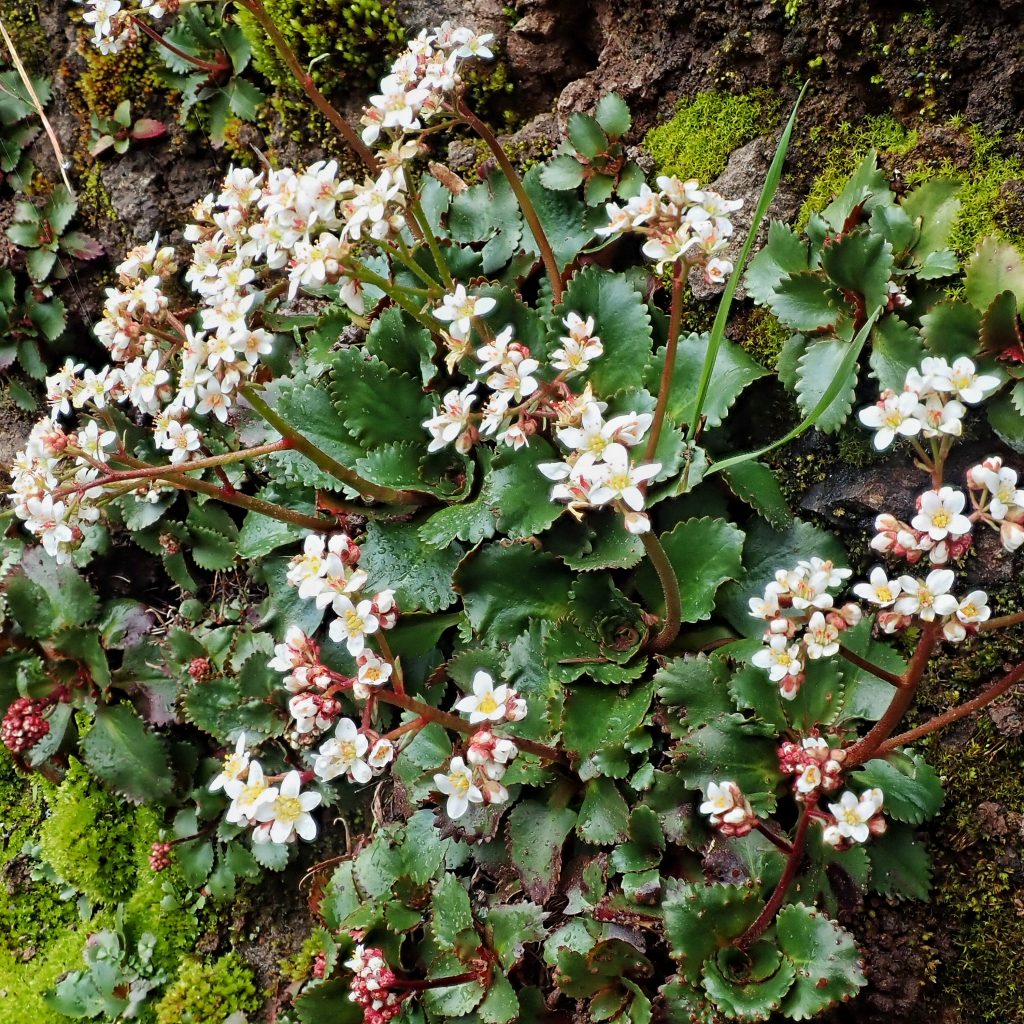
Well, the taxonomists have been busy again, complicating the identifications made by us recreational naturalists. What used to be Saxifraga occidentalis, with a bunch of varieties, has been found by the molecular biologists to belong to the genus Micranthes, and several of those varieties have been raised to species status, including the resurrection of the name Micranthes rufidula, first proposed by JK Small in 1905. But they have retained the most common common name for this former variety, rusty-haired saxifrage, which is equally applicable to the glandular hairs on the stem, and the pubescence on the bracts, sepals, and calyx.
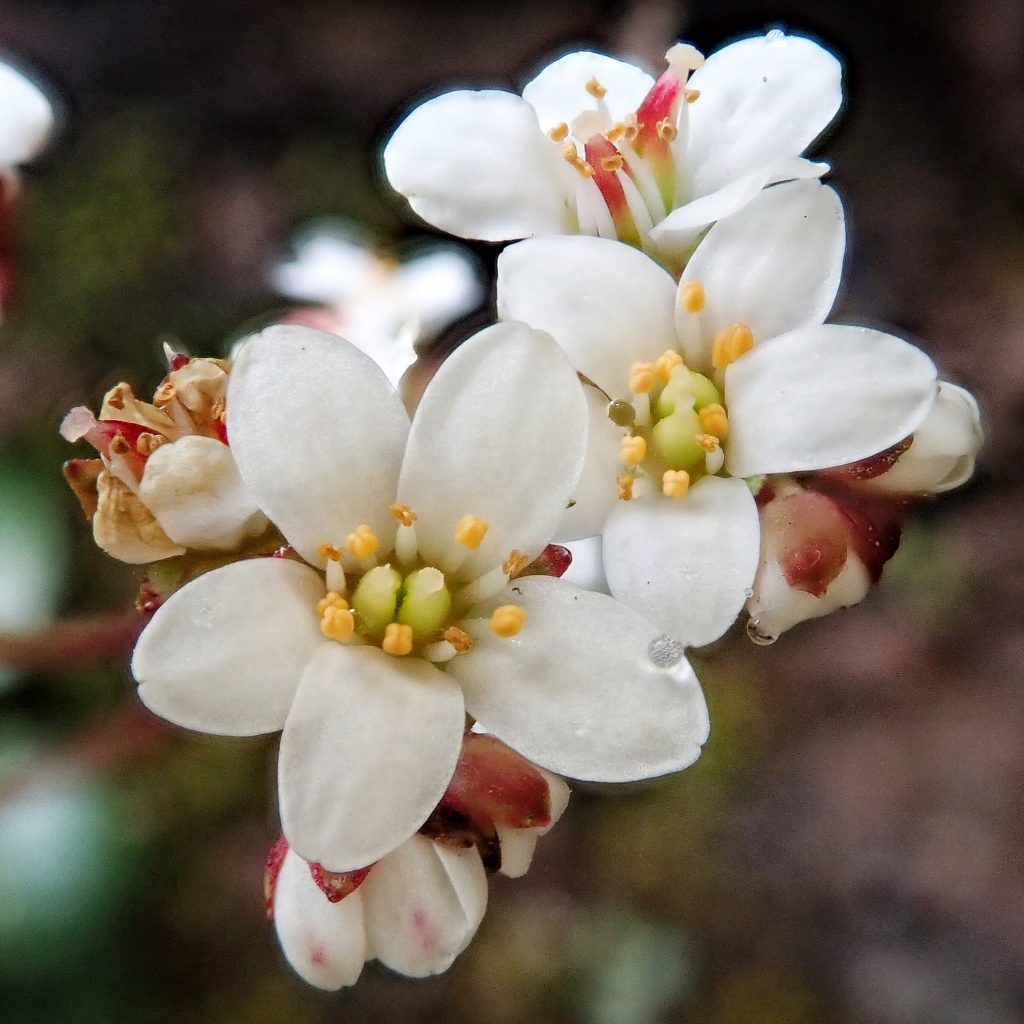
In some ways this does simplify things, because one of the morphological traits that divides Micranthes from Saxifraga is that Saxifraga has some leaves on the branches and stems, whereas Micranthes has bare stems and branches. This is an easily remembered and noticeable field mark. Most Micranthes also have smaller flowers than the Saxifraga, although M. rufidula has larger petals than most Micranthes.
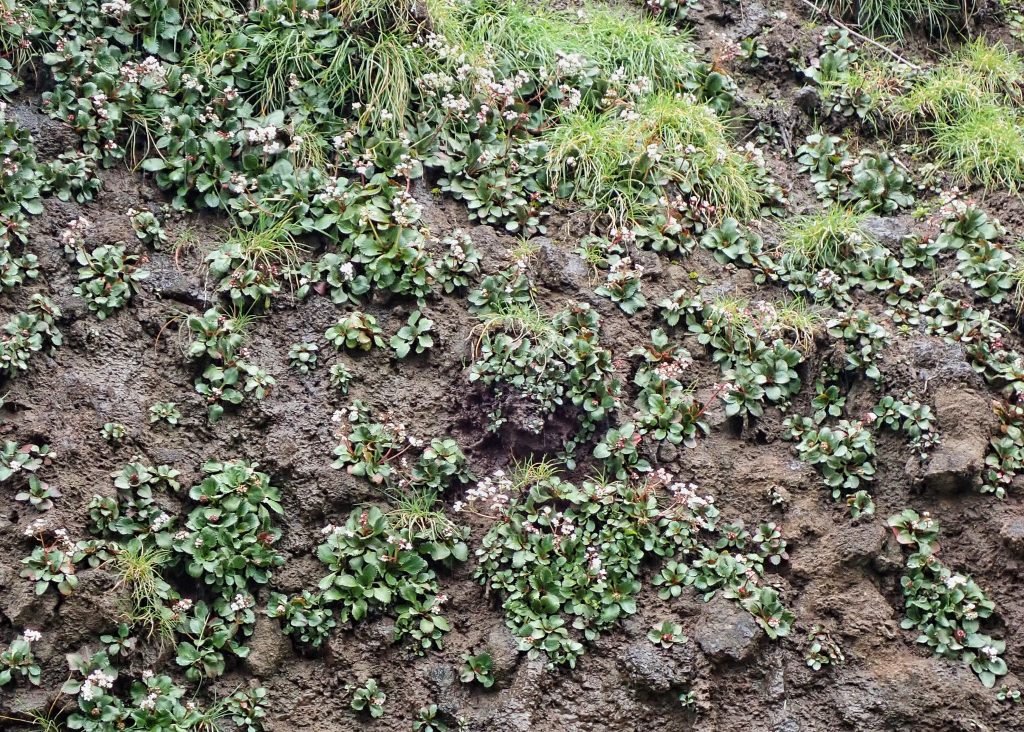
And none of that can detract from the sheer joy of finding these delicate white flowers blooming on a late winter day, the inflorescence rising above those sturdy and distinctive leaves. All I can hope is that, not being prone to varietal hairsplitting, I didn’t offend the multitude of what were probably in fact Micranthes rufidula, by calling them Saxifraga occidentalis. Just kidding. To the best of my knowledge our native plants never learned Latin or English, and only speak in Penutian dialects.
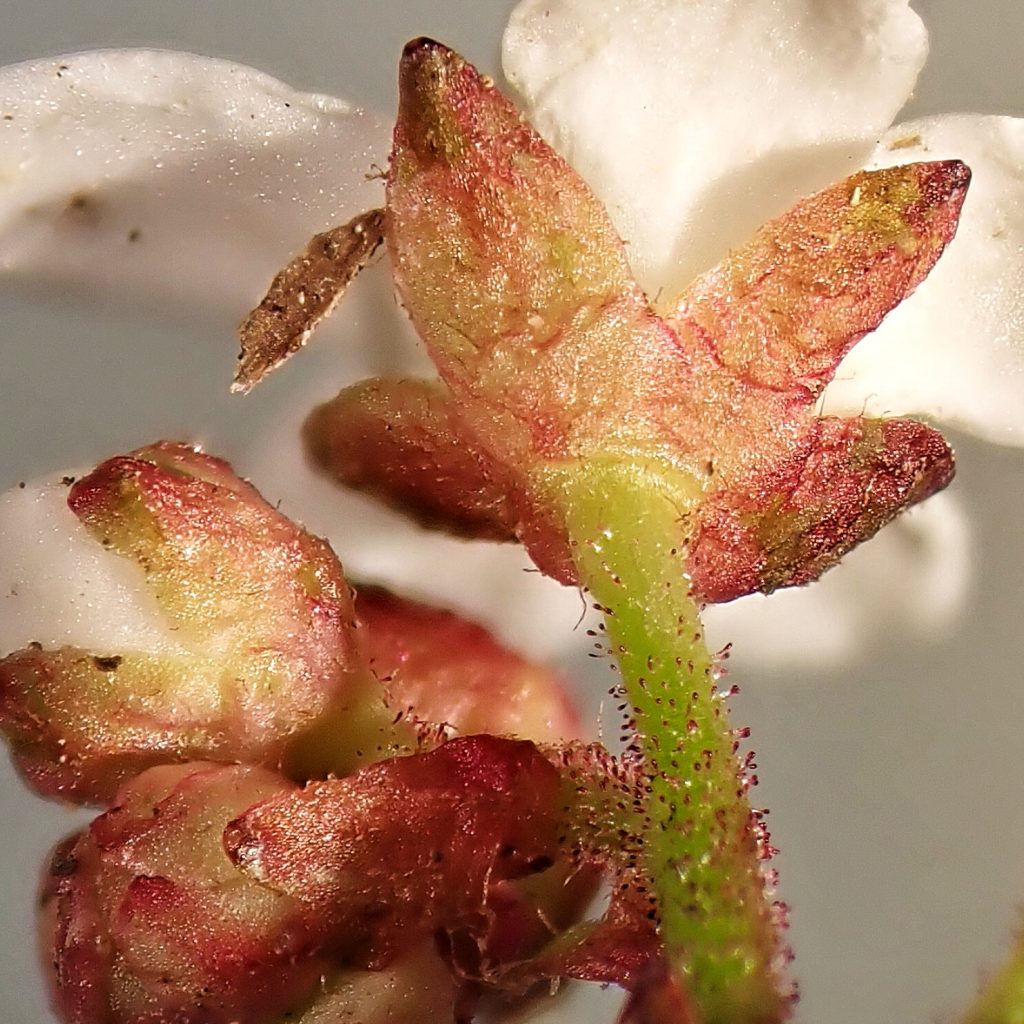
Description– Plants up to 12” tall; leaves only at base, stems bare; leaves leathery, ovate to wedge shaped, dark green on top and hairy and reddish ventrally, with rounded teeth on the margins; flowers white, petals 2-4mm long, with reddish bracts and calyx; ovaries superior, and stamens flattened and somewhat widened, even clublike; inflorescence flat topped, at end of stems and branches.
Similar species– M. occidentalis inflorescence pyramid shaped, bracts and calyx usually not reddish, leaves tend to be sharper toothed; M. oregana leaves longer and narrower, less pronounced teeth on margins; Saxifrage mertensiana has some leaves on flowering stems and branches, basal leaves rounder, lobed, sharper and more irregularly toothed.
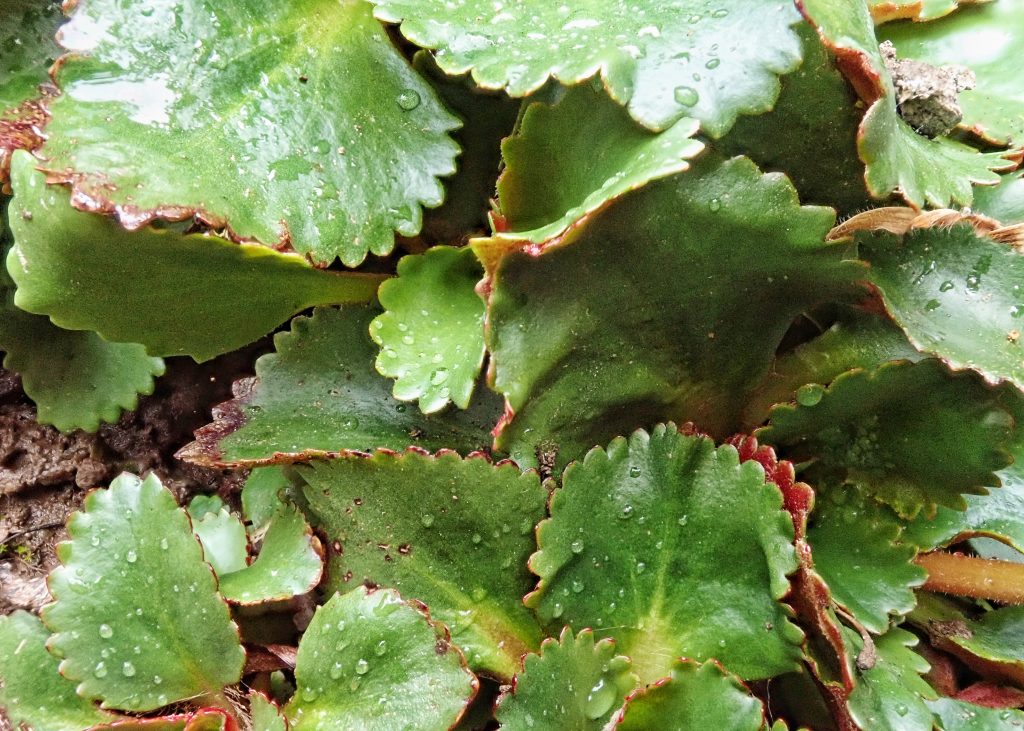
Habitat– Usually on wet, or at least vernally wet, slopes, on soil or cracks in rocks, up to 9,000’.
Range– NW North America; in our region it is most common west of the Cascades, but also present in montane areas east of the Cascades.
Reproductive timing– Flowers bloom late winter into summer.
Etymology of names– Micranthes translates roughly from the Latin as ‘small flowers’, which is more applicable to other members of this genus. The specific epithet rufidula is from the Latin for ‘reddish’, and refers either to the reddish pubescence on the bracts and calyx, or to the reddish glandular hairs on the stem.
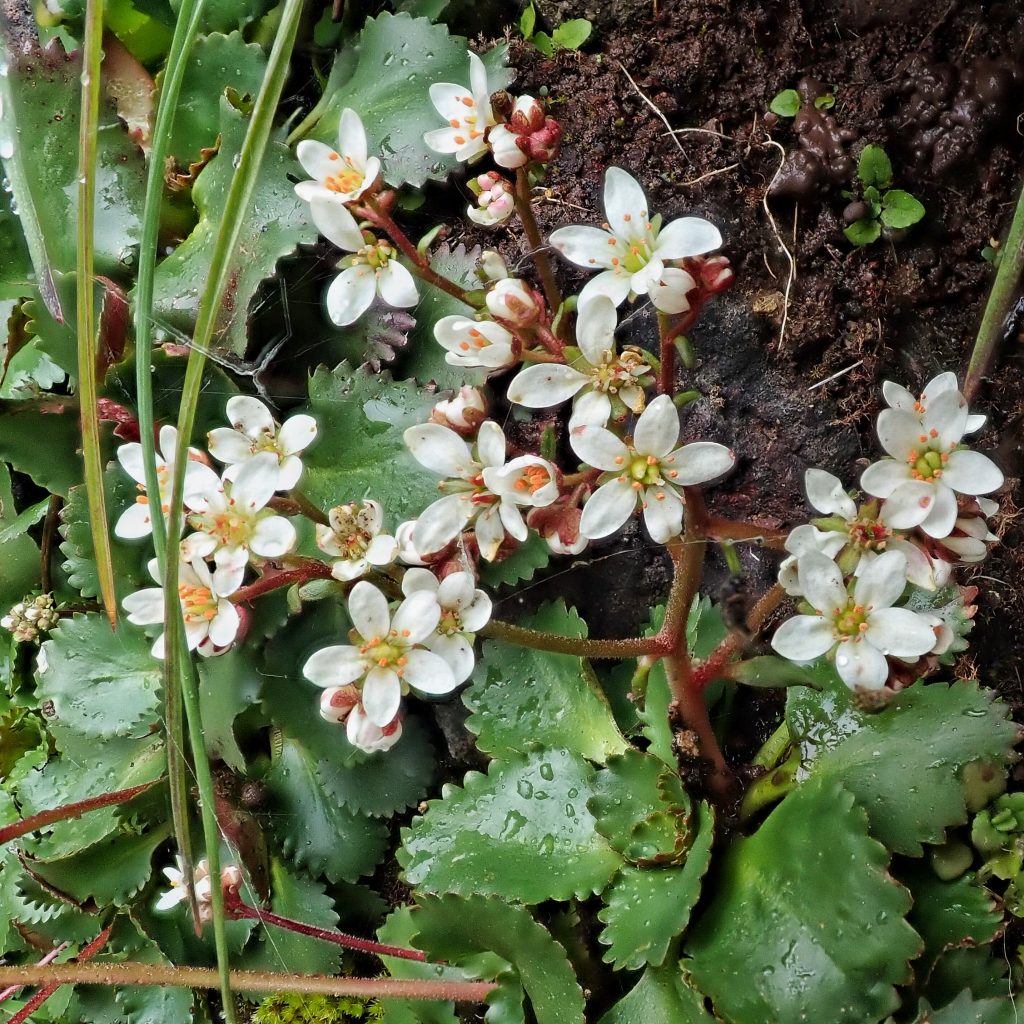
http://www.efloras.org/florataxon.aspx?flora_id=1&taxon_id=250065896
http://www.pnwflowers.com/flower/Saxifraga-rufidula
http://linnet.geog.ubc.ca/Atlas/Atlas.aspx?sciname=Saxifraga+rufidula
http://biology.burke.washington.edu/herbarium/imagecollection/taxon.php?Taxon=Micranthes%20rufidula
https://en.m.wikipedia.org/wiki/Micranthes_rufidula
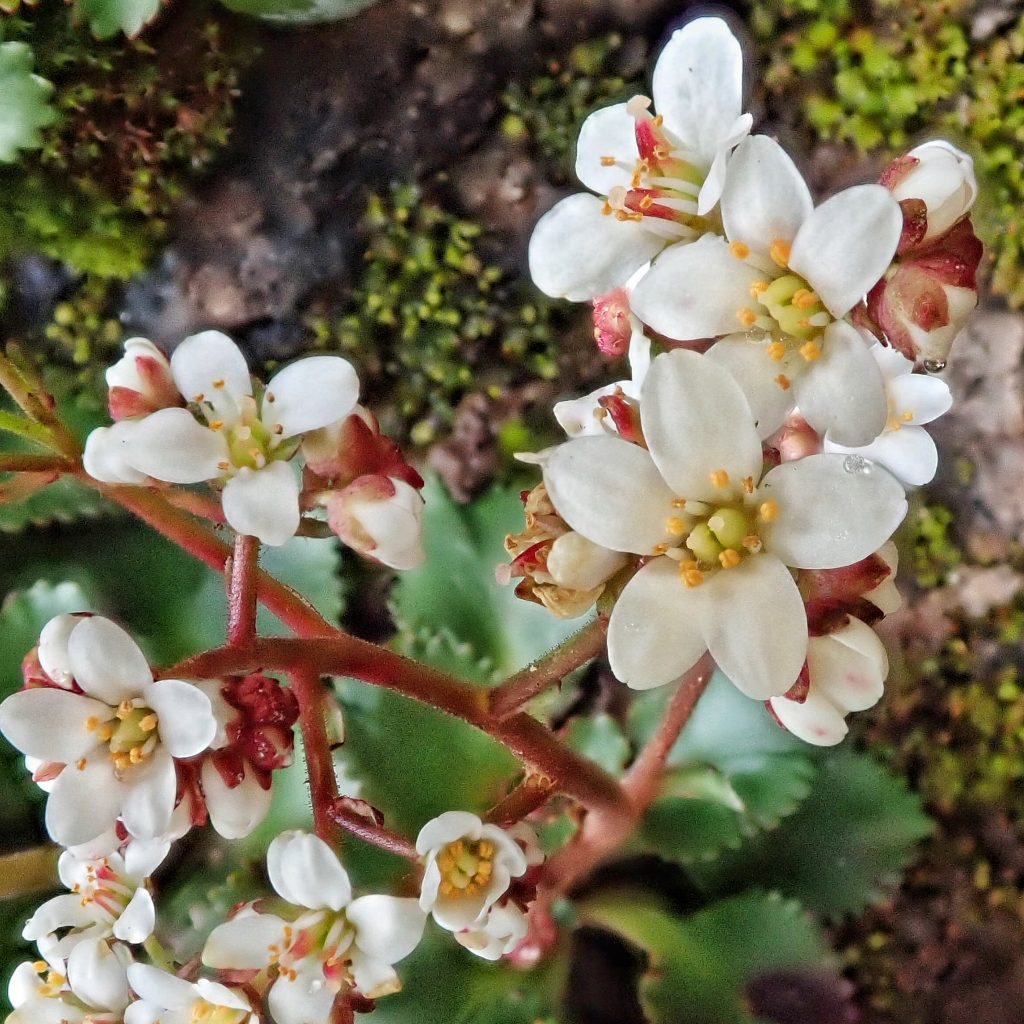
Penutian… I was wondering when the vestiges of poetry would sneek into the 10,000